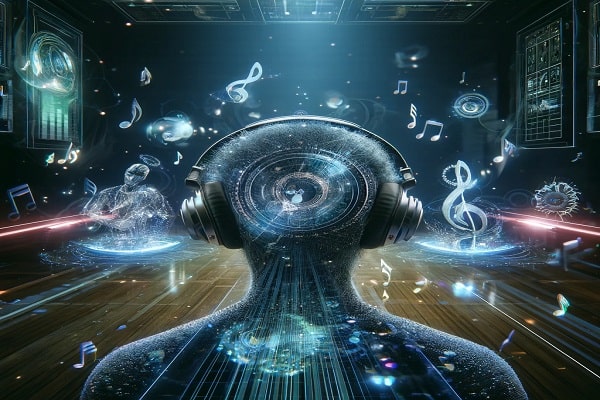Key Takeaways
- Understanding how 3D spatial audio enhances user experiences.
- Evaluating the applications of 3D spatial audio in various fields.
- Insights into the technological advancements driving 3D spatial audio.
- A comprehensive discussion on real-world use cases and user benefits.
Introduction to 3D Spatial Audio
3D spatial audio technology revolutionizes our auditory experiences by creating a more immersive and realistic sound environment. This innovative approach meticulously simulates the behavior of sound waves in physical spaces, allowing for a heightened sense of presence and spatial awareness in audio content. The applications of this technology are extensive, ranging from enhancing entertainment and gaming experiences to improving educational and healthcare settings. This advancement can significantly impact how we perceive and interact with sound in various aspects of our lives.
What is 3D Spatial Audio?
Unlike traditional audio systems that deliver sound from fixed points, spatial 3D audio provides a 360-degree soundstage. This means sound emanates from different directions, mimicking how we naturally perceive sound in real life. For example, when you hear a bird chirping, you can usually tell where it is relative to your position. 3D spatial audio replicates this effect, adding depth and realism that regular stereo or surround sound systems can’t offer. It’s like watching a flat-screen movie and experiencing an immersive 3D film.
Technological Advancements Behind 3D Spatial Audio
The latest advances in audio technology have profoundly influenced the development of 3D spatial audio, revolutionizing how individuals perceive and experience sound. The innovation behind 3D spatial audio is based on highly complex algorithms and cutting-edge audio processing hardware working together synergistically to create a profoundly immersive auditory environment for users. Integrating artificial intelligence (AI) is a key component contributing to this innovation. AI has emerged as an essential element in improving the accuracy and authenticity of sound staging. By harnessing the power of AI, it becomes feasible to analyze vast and intricate datasets of auditory cues and characteristics. This analysis enables the creation of meticulous and detailed sound simulations that accurately mirror real-world acoustic experiences, providing users with unparalleled audio realism and immersion.
Applications in Entertainment
The influence of 3D spatial audio is most evident within the entertainment domain. Its impact is transformative, fundamentally altering how we perceive and engage with audio-visual content, spanning various mediums such as movies, video games, and virtual concerts. A notable beneficiary of this technology is the gaming community, who can immerse themselves in a more engaging and authentic experience. Whether the subtle sound of footsteps sneaking up behind you in a suspenseful game or the multidimensional audio immersion at a virtual concert, 3D spatial audio redefines the benchmarks for excellence in entertainment.
Educational Potential and Benefits
The utilization of 3D spatial audio technology has significant and far-reaching implications within the field of education, extending well beyond its traditional role in entertainment. This advanced technology seamlessly integrates into virtual classrooms and training simulations, creating highly immersive and captivating student learning experiences. For example, within medical education, students can engage in true-to-life virtual dissections that closely mimic real-world experiences, allowing for a more comprehensive understanding of anatomical structures and processes. Similarly, engineering students can interact with and explore complex machinery in a fully simulated environment, gaining valuable practical insights and knowledge.
These cutting-edge applications empower students to form deeper connections with the material studied, resulting in heightened understanding and improved retention rates. By providing a richly multi-sensory learning experience, 3D spatial audio effectively bridges the gap between theoretical study and practical application, revolutionizing the landscape of educational technology. As a result, students are better prepared for the demands of professional practice and can grasp complex concepts more effectively, setting the stage for enhanced learning outcomes.
Real-world Use Cases
- Healthcare:In digital health, 3D spatial audio is employed in VR surgical training, enabling surgeons to practice procedures in a highly realistic setting. This advanced technology provides auditory feedback that closely mirrors real-world conditions, significantly enhancing the training experience. Doing so contributes to a safer and more effective learning process for healthcare professionals.
- Automotive:Car manufacturers increasingly adopt this technology in their infotainment systems. This enhances the in-car audio experience and contributes to safer driving by improving auditory notifications and alerts.
- Live Events:Concerts, sports broadcasts, and other live events are leveraging this technology to offer remote viewers an almost in-person experience from the comfort of their homes. Whether it’s the roar of the crowd in a football match or the subtle nuances of a live orchestra, 3D spatial audio brings these experiences to life.
How Users Benefit from 3D Spatial Audio
The advantages of integrating 3D spatial audio technology are not limited to enhancing entertainment; they also substantially impact various practical scenarios. Users consistently report experiencing a heightened level of immersion, a greater sense of realism, and an overall more enjoyable and engaging experience. Research suggests that creating realistic audio environments can significantly increase user engagement, resulting in more profound involvement in gaming, learning, or working activities. Furthermore, empirical studies have revealed that presenting learning materials in a multi-sensory format that includes immersive auditory experiences can substantially improve information retention and comprehension.
Future Prospects
The future of 3D spatial audio looks promising, with advancing technology and increasing adoption across various industries paving the way for a more immersive experience. We can expect even more sophisticated and user-friendly 3D audio experiences as AI and machine learning progress. Industries such as virtual, augmented, and mixed reality are set to benefit substantially from these developments, providing increasingly rich and captivating user experiences. With its expanding influence, 3D spatial audio is on the cusp of redefining the standards for how sound is perceived in digital and physical environments.
